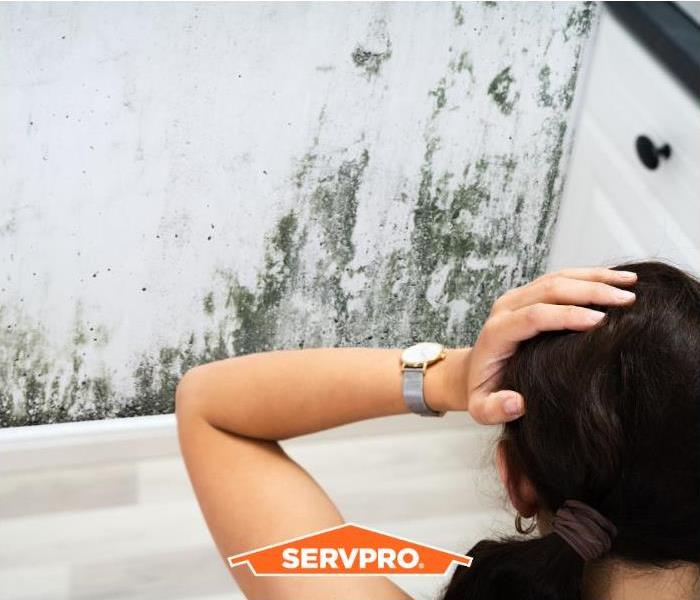Mold Prevention 101: Tips to Keep Your Home Mold-Free
1/4/2024 (Permalink)
Keeping your home mold-free is more than just a matter of cleanliness - it's about protecting your family's health and the integrity of your living space. Mold, a common yet potentially harmful intruder, thrives in damp, dark environments, and preventing its growth requires proactive measures. In this guide to mold prevention, we'll explore simple yet effective tips and strategies to fortify your home against mold infestation. From moisture control techniques to regular inspections, discover the key steps to maintain a healthy, mold-free environment for you and your family.
Watch the Humidity Levels
Monitoring humidity levels in your home serves as a pivotal defense against mold growth. High humidity creates an ideal breeding ground for mold, fostering its development on various surfaces. By keeping an eye on regulating indoor humidity, typically maintaining levels below 60%, you can prevent mold growth and moisture accumulation - which is what mold spores thrive on. dehumidifiers, ensuring proper ventilation, and promptly addressing leaks or condensation issues not only create a less hospitable environment for mold but also hinder its ability to take hold and become a major issue.
Create Good Air Flow
Establishing adequate air circulation within your home acts as a powerful deterrent against mold formation. Good airflow facilitates the dispersion of moisture-laden air, preventing it from settling and creating pockets of dampness where mold can grow. Proper ventilation, such as using exhaust fans in bathrooms and kitchens, allows humid air to escape, reducing the moisture content in the environment.
Also, promoting air movement through open windows or utilizing fans aids in drying out surfaces prone to exposure to mold and moisture accumulation, making it challenging from mold to find the sustained damp conditions it needs to grow. Ultimately, improved airflow not only helps maintain lower humidity levels, but also discourages the onset and proliferation of mold, contributing to a healthier home.
Find & Fix Leaks
Discovering and promptly addressing leaks in your home is paramount in the battle against mold damage. Leaks, whether from plumbing, roofs, or windows, introduce moisture into areas that are otherwise dry, providing a breeding ground for mold growth. Swiftly fixing these leaks prevents the continual ingress of water, thereby eliminating the sustained dampness mold requires to thrive. Timely repairs to water leaks not only halt the immediate moisture but also mitigate the risk of structural damage and the potential spread of mold throughout your home, protecting both your property and those living inside of it.
Call a Restoration Company like SERVPRO
If you've found significant water damage in your home, it's better to call a restoration company like SERVPRO right away. Our team can get there ASAP to dry, restore, and ensure that your property is back to preloss condition and to avoid any mold growing.
Mold has the capacity to generate allergens and irritants, posing potential health problems. Its rapid spread within your Hoboken residence or commercial space can occur within a mere 48 hours. Should you suspect a mold issue in your home or business, our team can conduct a thorough inspection and evaluation. In the event of mold presence, we possess the necessary training, tools, and proficiency to effectively address and remediate the mold infestation.
The Most Common Indoor Molds
Several types of molds commonly thrive indoors. Some of the most prevalent indoor molds include:
- Cladosporium: Found on fabrics, carpets, and wood surfaces, it's one of the most widespread outdoor molds that can also infiltrate indoor environments.
- Penicillium: Often discovered on materials with water damage, like insulation, wallpaper, and carpeting. It can produce strong musty odors.
- Aspergillus: This mold can grow on dust, building materials, and damp surfaces. Some species of Aspergillus can cause health effects.
- Alternaria: Commonly found in damp areas like showers, sinks, and basements, it's known for causing allergies and asthma symptoms.
- Stachybotrys chartarum (black molds): Often associated with water-damaged buildings, this mold can grow on materials with high cellulose content (like drywall), potentially producing mycotoxins.
These molds can trigger an allergic reaction, respiratory issues, and in some cases, more severe health issues. Removing and preventing mold growth is crucial for maintaining a healthy indoor environment.
Our Mold Remediation Process
Every mold infestation is different, from the amount of mold to the types of materials affected. Each scenario requires a unique solution, but the general process stays the same. The steps listed below illustrate our process for a "typical" mold remediation infestation:
- Emergency Contact - call us.
- Inspection and Mold Damage Assessment
- Mold Containment
- Air Filtration
- Removing Mold and Mold-Infested Materials
- Cleaning Contents and Belongings
- Restoration
About Us
SERVPRO of Hoboken/Union City is proudly owned by Lance and Jennifer Harvey- a husband and wife duo that owns two other SERVPRO locations, including SERVPRO of West Somerset County and SERVPRO of Aberdeen/Holmdel.
If you have an emergency, we're here to help. We understand the stress and worry that comes with a fire or water damage and the disruption it causes your home or business. Our goal is to help minimize the interruption to your life and quickly make it “like it never even happened.”
Learn about TEAM HARVEY: VIDEO






 24/7 Emergency Service
24/7 Emergency Service
